Open free webcast of the conference Mobius 2018 Piter
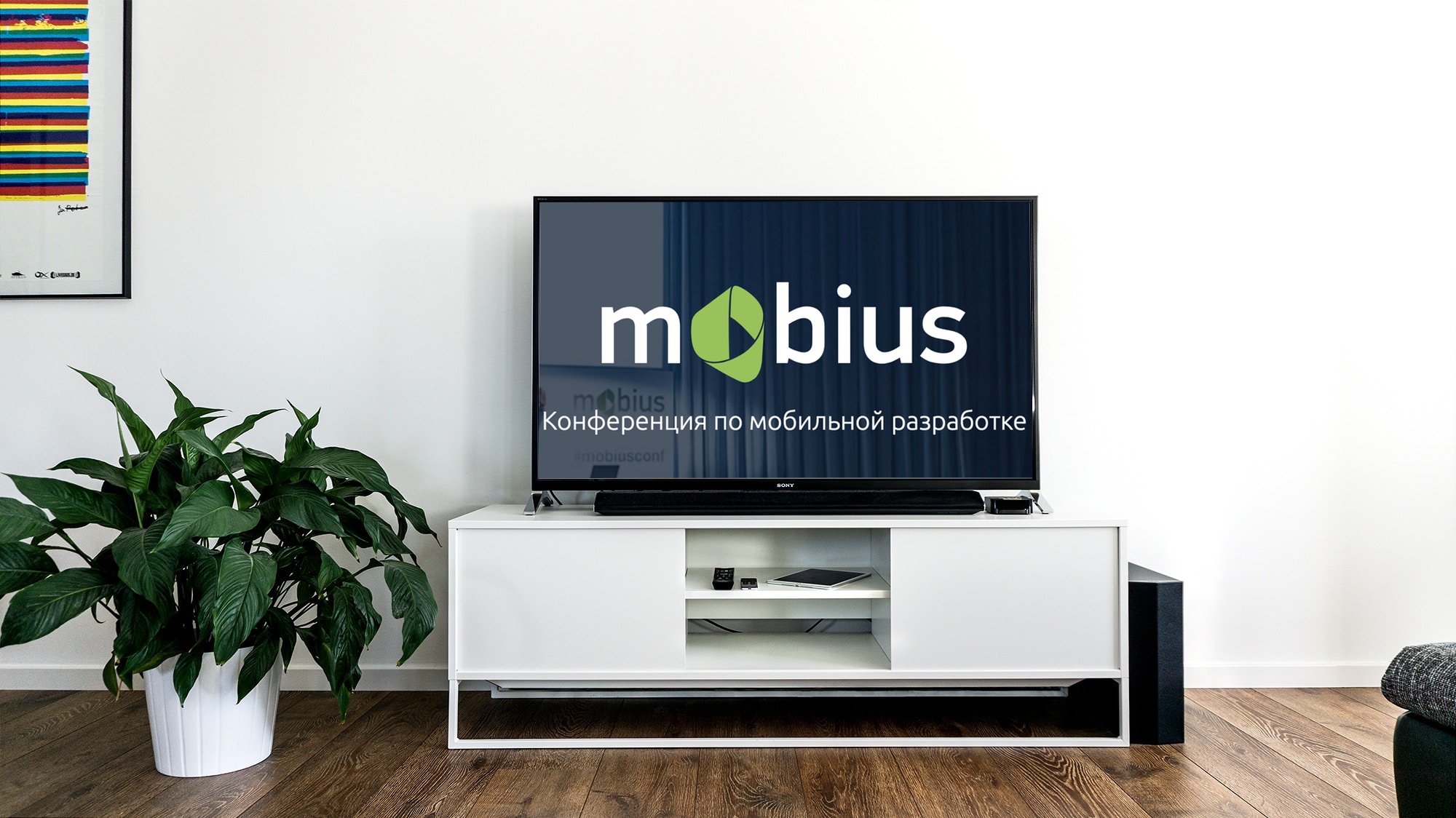
April 20-21, that is, tomorrow or the day after tomorrow, a conference on mobile development Mobius will be held in St. Petersburg. Android and iOS, various topics from multithreading to testing, Russian speakers and foreign stars - we have already written about what will be there.
But what they haven’t yet reported: on both days of the conference the online broadcast of the first hall will be free. It will go on YouTube, so it's convenient to watch anywhere - at least on a smartphone, at least on a TV. And although nothing can replace a completely personal presence, we try to bring the online experience closer to it. For example, viewers of a broadcast can write their questions to the speakers in a special chat, and between reports they will see interviews with speakers and inclusions from sponsor stands. In general, start broadcasting on both days on the most convenient screen for you and enjoy!
')
And which reports were included in the broadcast accessible to all? Under the cut - all their names and descriptions.
Day One (April 20)
10:30 Trusting iOS SDKs
The use of third-party SDK significantly speeds up the development process, but at the same time harbors pitfalls. Felix will talk about what risks are caused by dependency on third-party code, and how a potential attacker can easily add malicious code to your application.
 Felix Krause / Google
Felix Krause / GoogleFelix is the creator of fastlane, an open source tool for automating tasks related to iOS and Android development. Since 2015, he is on Twitter, and about a year ago, along with fastlane, he moved to Google. He recently announced a CI system for mobile developers fastlane.ci, and we then interviewed him.
12:00 Profiling in examples: looking for a bottleneck
Most likely, your application feels great on the last Pixel. Surely at first. But how to understand whether it works well enough on other devices? What to do after finding a problem and how to prevent it from recurring?
The report is a technical case. We will not delve into the jungle of optimizations, but we will consider where to start.
There is an application that works. There is a feeling that it does not work fast enough. First, we'll figure out how true this feeling is, using more precise tools than intuition. Then we “dissect” this application, using several tools one by one, along the way introducing optimization. Time is limited, so we will focus on parts of the tools: GPU profiler, Hierarchy Viewer, Overdraw display. Finally, we will look at several tools that allow you to monitor how well the application works from assembly to assembly.
Of course, a silver bullet does not exist, as well as a universal solution to all problems. However, in order to solve a problem, you need to find it and localize it. Understanding “where we are now” is an integral part of a successful move forward.
 Arthur Badretdinov / Vyng
Arthur Badretdinov / VyngConsiders that every software engineer is a developer, but not every developer is a software engineer. Writes the code so that then he was not ashamed. It works to ensure that the program does not just do its job, but its logic was clear and extensible by other people. Recently, making ringtones for Android unique in the company Vyng.
13:30 Kotlin Multi-platform Architecture for iOS and Android
Kotlin is moving in leaps and bounds towards cross-platform, dozens of repositories with applications of varying complexity appear.
We will explain how to start now to cross Clean Architecture with Kotlin Multiplatform Projects, how to write the business logic of an application once for all platforms and what restrictions this approach will impose.
The report will be of interest to adherents of Kotlin, who are not afraid of the Experimental prefixes and the boilerplate of a pure architectural approach.
 Roman Yatsyna / Revolut
Roman Yatsyna / RevolutAndroid developer in Revolut.
Clean Architecture, a longtime fan of Kotlin.
In his free time he writes about Android development on Medium and Habrahabr.
 Ivan Vazhnov / Revolut
Ivan Vazhnov / RevolutAndroid developer in Revolut.
Prior to mobile development, he was engaged in databases and enterprise projects for a long time, and also enjoys development under iOS and related areas.
Loves clean and beautiful code.
15:15 Birth, life and death, or What happens to the application in the system
Android is a very complex system where many different things happen that are very well hidden from ordinary developers.
In the report we will analyze:
- how Android launches itself, launches applications;
- who, why, through what mechanisms and what methods it causes in the launched application components;
- where do requests for access rights to certain resources go, on the basis of which the system decides whether to issue rights or not;
- how the application eventually dies: what can be killed, what will happen if you kill yourself.
The knowledge gained from the report will help Android developers to more subtly feel the system for which they are writing, and take into account some nuances that will make their applications more predictable.
 Anton Dudakov / Yandex
Anton Dudakov / YandexAnton works in the Yandex Automotive Solutions Laboratory. Takes the position of the project team Yandex. Auto, thanks to which Yandex is embedded in cars.
16:15 Services: it is impossible without them, but how to live with them?
Let's talk about how the restrictions on background work in Android are changing and how this affects developers. The report is not limited to a set of instructions "apply Y to X". The listener will need to think, formulate questions and climb into the rabbit hole :)
 Jonathan Levin / KolGene
Jonathan Levin / KolGeneJonathan is one of the leading Israeli mobile developers, part of the elite Google Developer Experts team. He played a key role in the success of Gett, who collected more than $ 500 million, and also received funding from his startup KolGene, which is gaining popularity with the genetic market connector. Being a loyal supporter of mobile and product management, Jonathan is also very enthusiastic about the backend. As an accomplished developer and entrepreneur, he knows exactly how to turn smart ideas into a profitable product.
17:35 On the shoulders of giants: the languages in which Kotlin studied
We will talk about the languages from which we borrowed ideas and concepts when we developed Kotlin. Among other things, it will be about Java, C #, Scala, Groovy, Python, Gosu, etc. Let us show how some of these ideas have changed in our interpretation. And we will tell a little about what famous languages are now learning from our experience (Swift, Java, Hack, C #).
 Andrey Breslav / JetBrains
Andrey Breslav / JetBrainsAndrei Breslav heads the development of the Kotlin language at JetBrains since 2010, he is engaged in both language design and general project management. Key speaker of large conferences. One of the authors of the blog Kotlin .
Day Two (April 21)
10:30 Multi-modular project architecture
At different stages of project maturity, different approaches to code organization work: the architecture evolves with the company. While in server development in trend microservices, modularization is gaining momentum in mobile applications.
Over the past couple of years, Avito has gathered a fairly large, by the standards of mobile applications, a team of about 25 developers for each of the platforms. For convenience, we have stepped into the modularization of the project.
Using the example of Avito iOS and Android, we will tell:
- about our approaches to the modularization of projects ~ 400k LOC;
- changes in assembly time depending on the stage of modularization;
- on how to measure the progress of project modularization;
- about experiments with health aka Application Health Check.
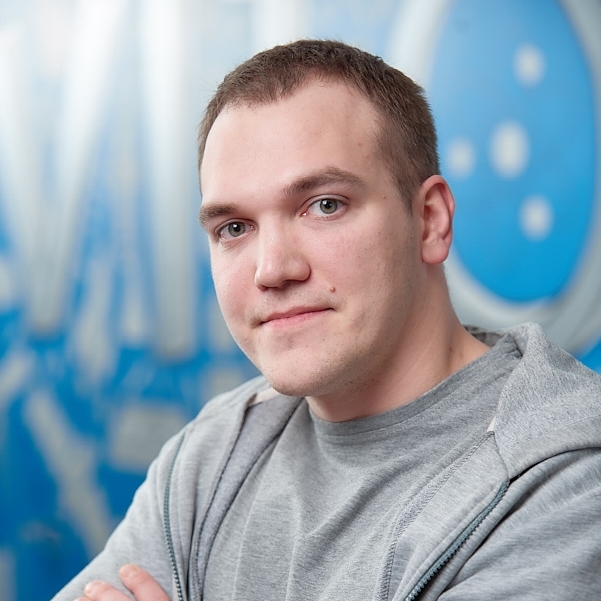 Evgeny Suvorov / Avito
Evgeny Suvorov / AvitoProfessionally began to develop for mobile applications in the fall of 2010. Passed through many types of companies: customized development start-ups, food start-ups, large holdings. Since 2014 he has been working at Avito, leading a team focused on iOS and Android mobile architecture. Since 2016, a member of the Program Committee AppsConf, from 2017 - a member of the Mobius PC.
12:00 How not to grow old during the assembly: Kapt and other adventures
This is a story from the life of the project, which has become, like many now, too long to assemble and be too connected due to its solidity. The story with its ups and downs build time. This is the result of a year-long refactoring, as well as research, which is mainly carried out only in products of the scale of Uber and Facebook. The time spent in the settings Gradle, configuration Dagger2 and thinking through tricky solutions to reduce connectivity took more than one person-month. And the conclusion and decision miraculously fit into the hour of the report.
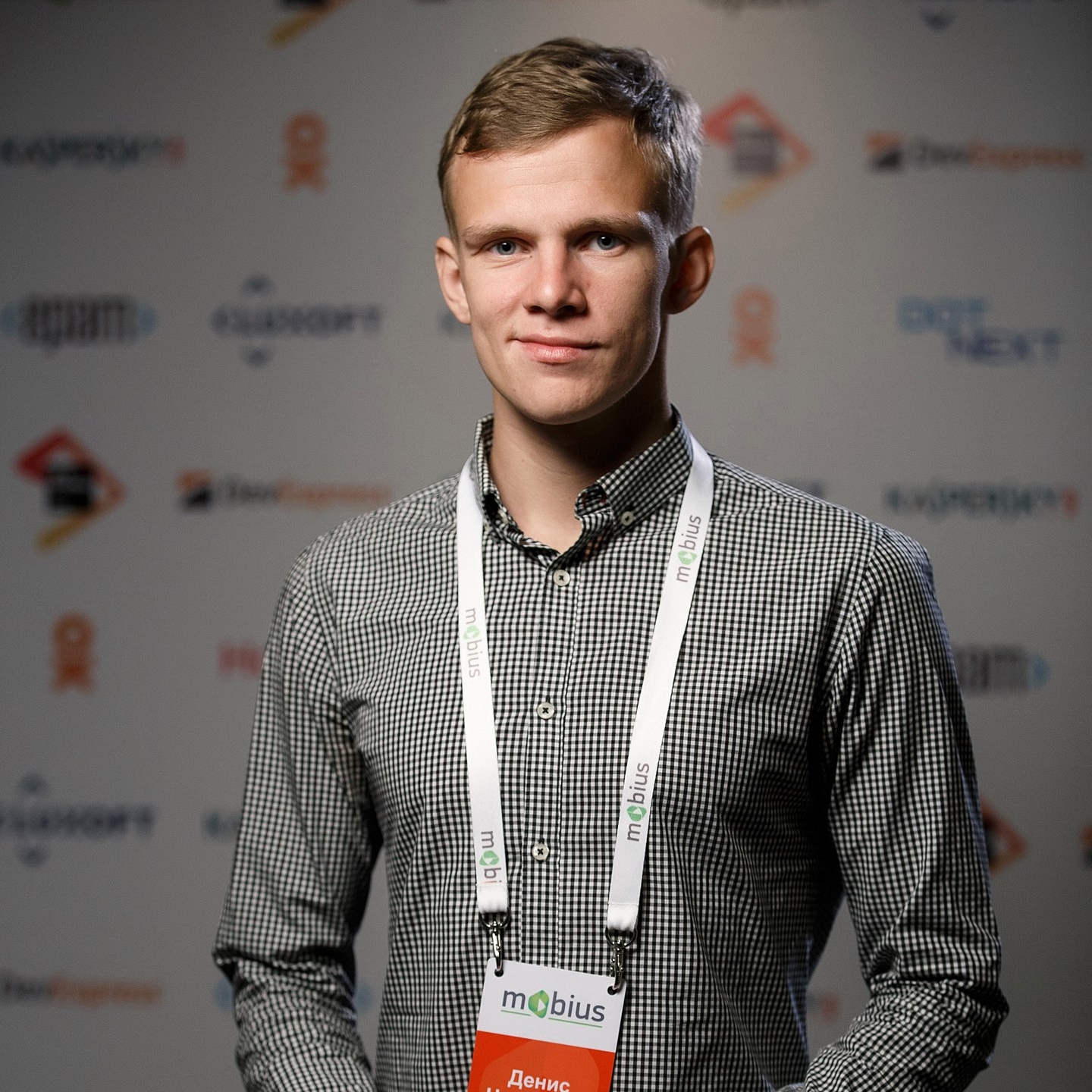 Denis Neklyudov / 90seconds.tv, Android GDE
Denis Neklyudov / 90seconds.tv, Android GDEGoogle Developer Expert, living side by side with Android for more than six years. Several times conducted Studyjams courses on Android, the speaker of many conferences, including Dump, Droidcon, Mobius. Also known as one of the leading podcasts about Android development. Now working in Singapore at 90Seconds.tv.
13:30 Data-driven UI: unlimited power
Let's tell about the technique of building and testing data-driven UI components. This approach provides maximum isolation of individual modules, the ability to write snapshot tests, unit tests, and interactive tests (storybook).
In the examples we will show how to create animations, transitions between screens and interactive gestures using data-driven methods. The examples will be focused on the iOS platform and the Swift language, but the technique is quite suitable for Android.
 Alexey Demedetsky / Sigma Software
Alexey Demedetsky / Sigma SoftwareMobile developer at Sigma Software. Seven years of his life engaged in the creation of mobile products to order. He sees his mission in finding the most efficient approach to converting business hypotheses into supported code. To do this, it often explores new architectures, studies embedded languages, and metaprogramming. He sees the cost of making changes as the main optimization metric for himself and builds all his decisions around its minimization.
15:15 What mom never told you about multithreading
When we were children, there were taboo topics that our mothers never talked about. Chances are that they never talked about multithreading.
Therefore, in this report, Fernando and the audience will walk together on how various options for working with multithreading exist today on mobile platforms. First of all, it comes from Android, but much of what will be said will apply to other platforms.
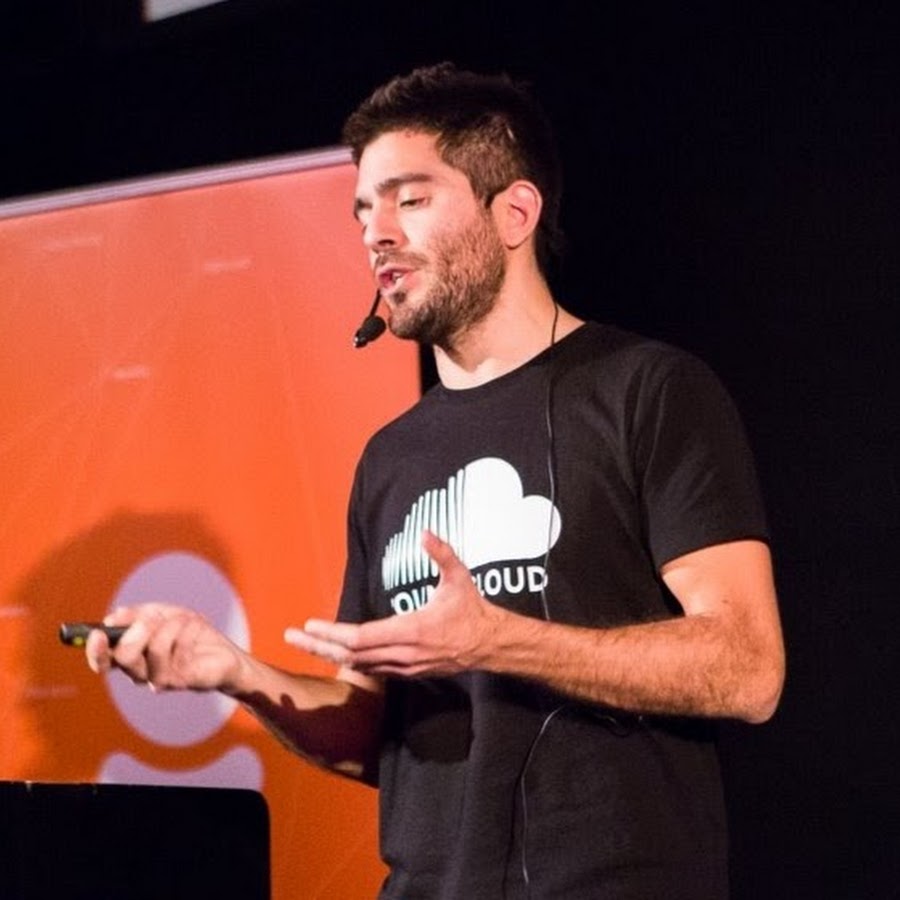 Fernando Cejas / IBM
Fernando Cejas / IBMFernando Sehas has been engaged in Android development since the advent of the platform. He came to one of the past Mobius as an employee of Soundcloud, but recently Fernando became a developer advocate at IBM - partly because the new work allows him to attend conferences more often and share knowledge.
16:45 Avito Mobile App Releases
The report will tell you how the process of release of mobile applications in Avito is organized, how you can assemble dozens of features in one place, which hundreds of people work on and can’t break anything. We show what steps in the process can be automated, how to reduce the amount of manual testing before release and, nevertheless, be sure that nothing is broken.
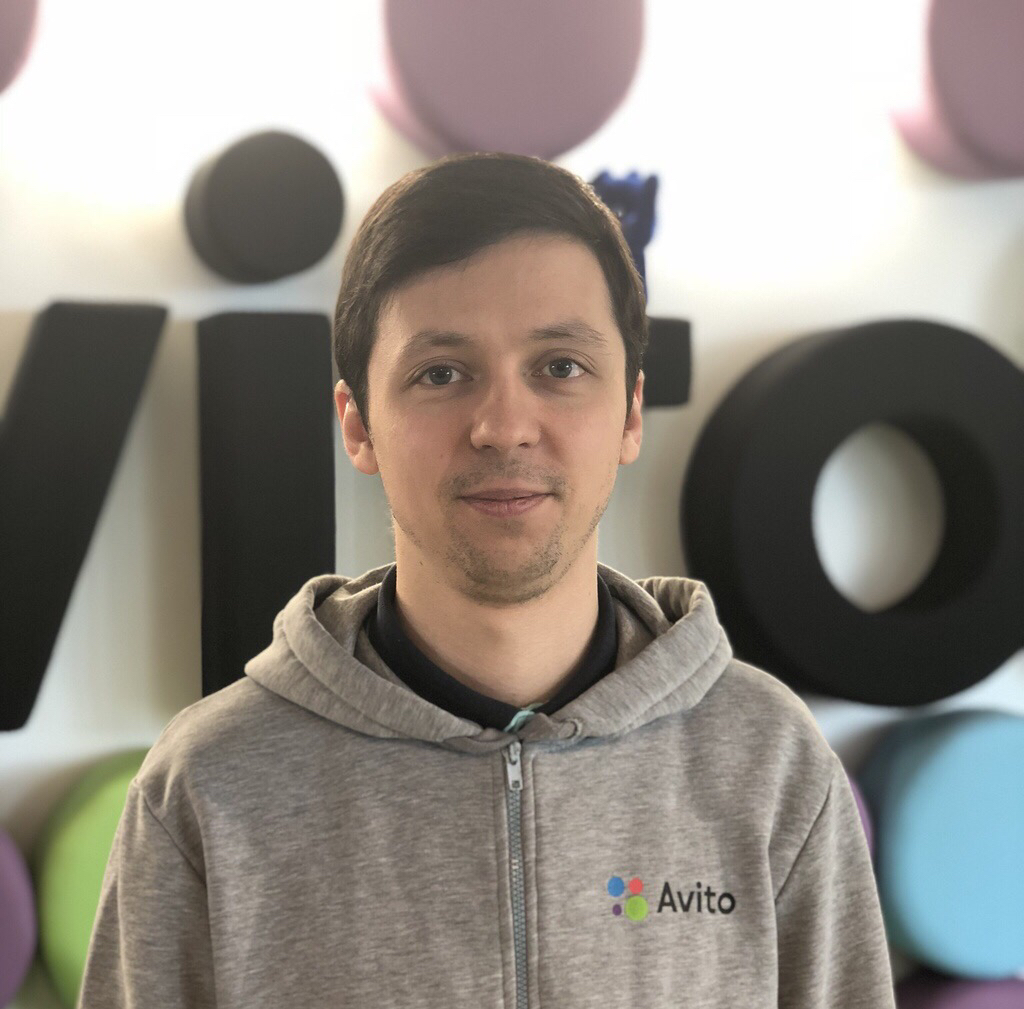 Alexey Shpirko / Avito
Alexey Shpirko / AvitoiOS developer since 2011, the technical team of the cross-functional team dedicated to the acceleration of mobile application releases in Avito. Three years ago, he was the team leader for the Avito iOS developers team, and before that, the senior iOS developer for Samsung.
18:15 The epic battle: iOS vs. Android
There are no “bad operating systems”. There are developers who create applications for users. What users live with the OS depends on their knowledge.
Which community is better versed in their field? Android developers who need to deal with insane fragmentation, or iOS wizards facing Apple's strict guidelines?
For the first time in history, you will have the opportunity to prove which platform is best for developers. How? Everything will be in the final keyout of the conference.
 Jonathan Levin / KolGene
Jonathan Levin / KolGeneJonathan is one of the leading Israeli mobile developers, part of the elite Google Developer Experts team. He played a key role in the success of Gett, who collected more than $ 500 million, and also received funding from his startup KolGene, which is gaining popularity with the genetic market connector. Being a loyal supporter of mobile and product management, Jonathan is also very enthusiastic about the backend. As an accomplished developer and entrepreneur, he knows exactly how to turn smart ideas into a profitable product.
We remind the link to the open broadcast. And if one room turned out to be not enough for you, and you want to have access to what is happening in all halls (and immediately after the end of the conference to receive videos of all reports), you can still get access to a paid broadcast on the website .
Source: https://habr.com/ru/post/353858/
All Articles